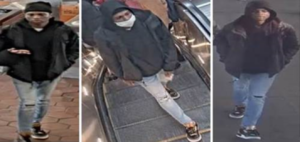Hispanic Innovators of the Faith Lecture
By Analucia Franco
On Monday in Caldwell Hall’s Happel Room. “Hispanics and the Remapping of American Catholicism in the 21st Century: Reading the Signs of the Times,” was presented by Hoffsman Ospino, Ph.D., an assistant professor of theology and religious education at Boston College.
The hour-long lecture focused on presenting Ospino’s research and findings from the National Study of Catholic Parishes with Hispanic Ministry on the Hispanic Catholic experience in the United States. These findings, according to Ospino, give an understanding of U.S. Catholic life today.
At the start of the lecture, Ospino presented his own experience immigrating from Colombia to the United States and gaining a Hispanic identity.
Ospino said that U.S. Catholic ministry cannot “take for granted” the strong presence of the Hispanic Catholic population. According to the National Study of Catholic Parishes with Hispanic Ministry, 40% of U.S. Catholics are Hispanic. Ospino referred to “reading the signs of the times in light of our faith” as the appropriate approach to discovering “where we’re heading.” He called for a stronger investment in the Hispanic Catholic ministry, especially in areas, such as the West Coast and South of the U.S, which are not traditionally Catholic but are seeing a growing Hispanic Catholic presence.
Ospino said that the current U.S. Catholic Church’s structure was developed to serve society in the 20th century. The services provided were mainly developed where most of Catholic populations where located during this time: the Northeast.
The National Study of Catholic Parishes with Hispanic Ministry shows that most Catholic ministerial programs and schools are found in the Northeast. The reality that Ospino presented is that with the growing presence of Hispanic Catholics in the Southern and Western parts of the country, there must be a “remapping” of the present pastoral initiative.
Ospino presented a map showing the growing presence of Hispanic parishes in the South and West compared to the Northeast. According to Ospino, the problem is not the lack of Hispanic presence in parishes, but the lack of structured programs available to Hispanic Catholics in the areas where they are mostly living. According to the National Catholic Reporter, 2/3 of Catholic schools in the U.S. are found in the Northeast and 83% of Catholic colleges and universities are found in the Northeast and Midwest.
64% of Hispanic people in the United States were born in this country, according to Ospino’s findings. Nevertheless, there is a shared cultural experience between most Hispanic people in the United States.
Ospino said that it is important to consider the many “dynamics” with which many Hispanic people in the U.S. are “wrestling.” These include socio-economic issues that affect much of the Hispanic population in the U.S. The lecture presented a high percentage of Hispanic children attending underperforming public schools, with only 4% educated in catholic schools. Ospino spoke about the importance of catholic schools, catechism, youth groups, and apostolic movements in preventing a loss of religion within Hispanic youth.
“Mostly, youth groups that I’ve seen are comprised of Latinos who come from their home countries, who bring their practices and [ways of] worshipping from their home countries,” said Leticia Rivera, a Catholic University of America alumni who graduated in 2015 and now works at the U.S. Conference of Catholic Bishops, speaking of the lack of Hispanic-U.S born youth involvement in their religion.
Ospino spoke about several ways to “better build the Catholic community to include everyone’s gifts.” These include paying increased attention to where Catholicism is growing, learning “skills and attitudes” to live as a community that is “relocated and dislocated,” changing pastoral approaches to cultivate parish life, working with Hispanic youth, looking at the Hispanic community as a “gift” and not a “problem needing to be resolved,” and participating in the Fifth National Encuntro on Hispanic Ministry (V Encuentro).
The Fifth National Encuentro of Hispanic Ministry is a four year initiative that began January 2017 to discover ways to better engage and “respond to the Hispanic/ Latino presence” in the U.S. According to V Encuentro, 175 dioceses, 42 catholic organizations, and 13 lay Ecclesial Movements are participating in the Encuentro.
“He suggested great ways to meet the challenges of Hispanics, or Hispanic needs: Catholic Schools and grupos juveniles [youth groups],” said Jeison Cortes, a senior Philosophy major. “There is a huge need in the church today and we can meet this challenge, or this need, by not ignoring it, but facing it face-to-face.”
“Latinos are the church,” Ospino said, referring to the need for a communal American church that does “not just serve Latinos” but “that is Latina.” Ospino referred to the Church becoming who she serves, similarly to how Pope Francis has asked for a “poor church for the poor.”







